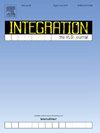ARS-Flow 2.0: An enhanced design space exploration flow for accelerator-rich system based on active learning
IF 2.2
3区 工程技术
Q3 COMPUTER SCIENCE, HARDWARE & ARCHITECTURE
引用次数: 0
Abstract
Surrogate model-based design space exploration (DSE) is the mainstream method to search for optimal microarchitecture designs. However, building accurate models for accelerator-rich systems within limited samples is challenging due to their high dimensionality. Additionally, these models often fall into local optima or have difficulty converging. To address these issues, we propose a DSE flow based on active learning, called ARS-Flow. This method features particle-swarm-optimized Gaussian process regression modeling (PSOGPR), a multiobjective genetic algorithm with self-adaptive hyperparameter control (SAMOGA), and a Pareto-region-oriented stochastic resampling method (PRSRS). Using the gem5-SALAM system for evaluation, the proposed method can build more accurate models and find better microarchitecture designs with acceptable runtime costs.
求助全文
约1分钟内获得全文
求助全文
来源期刊

Integration-The Vlsi Journal
工程技术-工程:电子与电气
CiteScore
3.80
自引率
5.30%
发文量
107
审稿时长
6 months
期刊介绍:
Integration''s aim is to cover every aspect of the VLSI area, with an emphasis on cross-fertilization between various fields of science, and the design, verification, test and applications of integrated circuits and systems, as well as closely related topics in process and device technologies. Individual issues will feature peer-reviewed tutorials and articles as well as reviews of recent publications. The intended coverage of the journal can be assessed by examining the following (non-exclusive) list of topics:
Specification methods and languages; Analog/Digital Integrated Circuits and Systems; VLSI architectures; Algorithms, methods and tools for modeling, simulation, synthesis and verification of integrated circuits and systems of any complexity; Embedded systems; High-level synthesis for VLSI systems; Logic synthesis and finite automata; Testing, design-for-test and test generation algorithms; Physical design; Formal verification; Algorithms implemented in VLSI systems; Systems engineering; Heterogeneous systems.
 求助内容:
求助内容: 应助结果提醒方式:
应助结果提醒方式:


